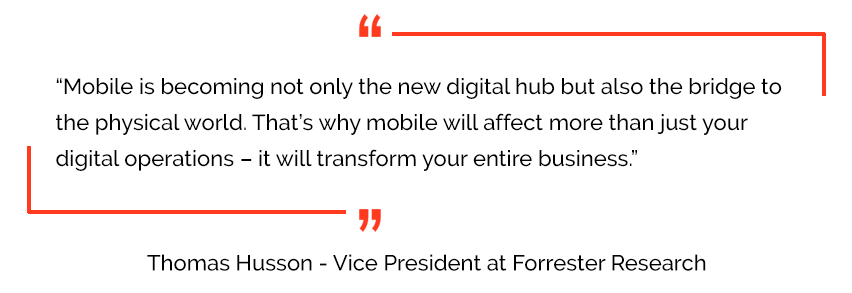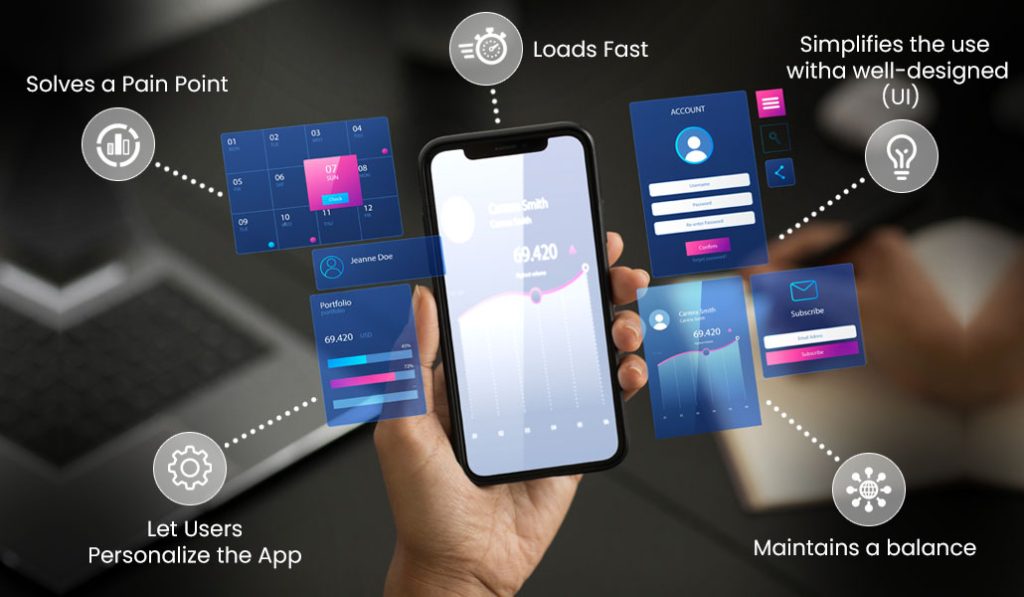
In today’s digital and mobile-driven world, having an app that people use effectively is crucial. But what do we mean by “use effectively,” and what makes an app successful? A mobile app shouldn’t just be a digital platform; it should be a solution to people’s problems. It needs to address their needs and deliver what your business offers in a way that simplifies their lives. Ultimately, a mobile app should make life easier for its users.
Countless mobile apps flood the market, with thousands launching daily. Even if you create the best app in the world, it still faces fierce competition. How do you stand out?
This article dives into the secrets of successful apps. We’ll explore what makes an app great, along with essential development tips and features used by popular apps.
If you are an entrepreneur, businessperson, or anyone looking to learn how to build a successful mobile app and provide what your audience needs, head to find the best digital agency out there in your area.

The Secret Sauce to Build a Successful Mobile App: Balancing User Needs and Business Goals
Imagine an app focused purely on selling products or ads to its users – it might not find an audience if it doesn’t offer real value. On the flip side, an app that prioritizes users but has no plan to bring in revenue won’t last long.
So, the key is to find the sweet spot: providing a solution that’s both valuable to users and profitable for the business. By creating an app that solves real problems for your target audience, while also meeting your business goals, you’re setting yourself up for long-term success.
Top priorities for successful apps – Made for customers
The app graveyard is overflowing with ideas that failed to launch, or fizzled out after a brief flurry of downloads. What separates the thriving apps from the forgotten ones? It all boils down to understanding and addressing customer needs. Here are some key features to build a successful mobile app when it comes to meeting user expectations:

- Solves a Pain Point: Great apps start by identifying a specific problem for their target audience. Whether it’s helping you hail a ride, order takeout, or learn a new language, the app should offer a clear value proposition that makes your life easier or better.
- Loads Fast: Nobody wants a sluggish app. Fast loading times and smooth performance are essential for a positive user experience. Apps that take forever to launch or constantly freeze are quickly deleted.
- Simplifies the use with a well-designed (UI): A well-designed UI features intuitive navigation, consistent patterns, and a minimalist aesthetic, ensuring a user-friendly experience across all devices. Even the most powerful app is useless if it’s confusing to navigate. Simplicity is king. A user-friendly interface with clear menus and intuitive actions keeps users engaged and prevents frustration.
- Maintains a balance: Balances design and functionality. The app should be visually appealing while offering valuable features tailored to user needs and target use cases.
- Lets Users Personalize the App: People like to feel like an app understands them. Features like personalized recommendations, custom settings, and curated content based on user preferences show you care about the individual user experience.
Things to Consider When Building a successful app – Ideal for businesses

- Updates: Your app should receive regular updates and be capable of handling them seamlessly. Regular updates enhance functionality, ensuring apps stay relevant and meet evolving user needs. They also address bugs and improve performance, providing a seamless user experience.
- Security and Data Privacy: Your users need to trust you with their data. Make sure you embed a robust security feature to protect sensitive business data, maintaining customer trust and compliance with regulations. Multi-factor authentication, encryption, and secure coding practices are essential components of a secure app.
- Maintenance: You need proactive maintenance for your app. It ensures optimal performance and minimizes downtime, enhancing customer satisfaction. Monitoring and promptly addressing issues keeps apps reliable and efficient.
8 Steps to Build a Successful Mobile App

Market Research and Idea Validation
Before writing a single line of code, conduct comprehensive market research. Understand your target audience’s needs, identify gaps in the current market, and validate your app idea. Competitor analysis is crucial to discover what works and where there’s room for improvement.
Define Your Unique Value Proposition (UVP)
Clearly define your app’s unique value proposition. What differentiates your app from competitors? Whether it’s a unique feature, superior user experience, or specialized niche focus, the UVP should be concise and compelling.
Build an MVP (Minimum Viable Product)
Develop a Minimum Viable Product with essential features to test your app’s core concept. This will help you get valuable feedback from early adopters, reduce development costs, and validate the product-market fit before investing heavily in full-scale development.
User-Centric Design and UI/UX
A user-friendly, visually appealing design is key to retaining users. Create an intuitive navigation flow and prioritize high-quality UX/UI design. Conduct usability tests to refine your app’s design iteratively.
Cross-Platform Development
In 2024, cross-platform development tools like Flutter and React Native enable you to develop apps that run seamlessly on both iOS and Android. This reduces development time and costs while ensuring a consistent experience across platforms.
Implement Security Measures
Data privacy and security are top concerns for users. Implement robust encryption, secure authentication, and data anonymization techniques to protect user data.
App Store Optimization (ASO)
Optimize your app’s listing in app stores with relevant keywords, engaging visuals, and clear descriptions to increase visibility and downloads. When you want to build a successful mobile app, you need to take care of this.
Continuous Improvement and Marketing
If you want to build a successful mobile app, it’s important to improve regularly. Release updates based on user feedback, fix bugs promptly, and add new features regularly. Craft a marketing strategy that includes social media, influencer collaborations, and paid advertising.
Final Thoughts
Creating a successful mobile app demands meticulous planning and execution. It involves understanding your target audience, crafting a unique value proposition, assembling the right team, selecting suitable distribution platforms, incorporating security measures, and devising a robust go-to-market strategy.
By adhering to best practices and keeping pace with emerging trends and technologies, you can build a mobile app that fulfills user needs while achieving your business objectives, setting your mobile app on a path to success.
















